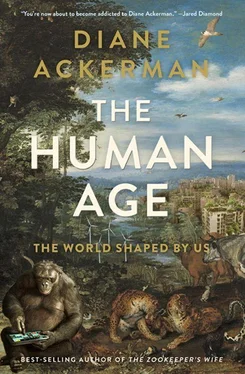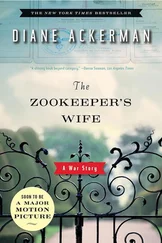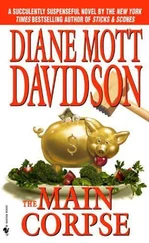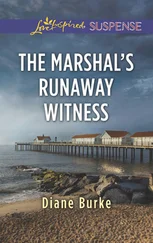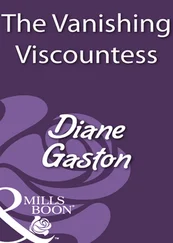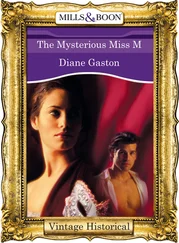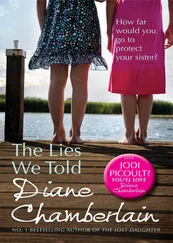A FREAK WINTER storm and tropical hurricane rolled into one, Sandy drew breath off Africa’s west coast, barreled across the Caribbean, and charged up the eastern seaboard of the United States, swinging left with a gut punch that smashed in houses, sucked boats out of harbors and hurled them, masts and rigging flying, into front doors and garages.
Only a day before Halloween, the scene was beyond macabre, as if a Chagall painting had suddenly come to life in a 90 mph whirlwind of whizzing trees, animals, and objects. People unlucky enough to be caught outside were pulled sideways down the streets. It was as if a monster were wrestling electrical lines to the ground, clawing up roads, turning neighborhoods into sandboxes. Piers and boardwalks crumpled like cardboard as the superstorm slapped them into the sea.
In this most densely settled area of the United States, prone to both hurricanes and nor’easters, record tides are usually measured in fractions of an inch. A major hell-raiser, Sandy even shattered the record for record-keeping—its tides had to be measured in feet. In one seaside community in Queens, after tidal surges beat the local record by three feet, a twenty-foot wave washed the whole research station into the ocean. In another town, the storm smashed furnaces and gas pipes, igniting fires that leapt from home to home, where doubly stunned residents found their first floors flooded and their roofs alight. The homes burned like surreal Fourth of July sparklers. In the beachfront town of Breezy Point, Queens, a blaze devoured 110 homes in one neighborhood while firefighters struggled to reach them through fast-flowing streets. All three regional airports shut down and canceled twenty thousand flights; Amtrak halted service to the whole Northeast Corridor. Forty-three million gallons of water gushed through the Brooklyn Battery Tunnel. The pounding ocean filled tunnels and subways and submerged lower Manhattan, where a flotilla of cars bobbed like colorful beetles.
I’ll never get used to sweetheart names—Debby, Valerie, Helene—referring to land-scrubbing, wave-rearing, homewrecking, cyclonic mayhem. The name Sandy sounds like it belongs to an innocent, sun-kissed surfer. I’m not sure why we choose to domesticate cataclysmic violence in this way. It’s too reminiscent of World War II pilots painting their girlfriends’ names on warplanes, a paradox captured with lyric poignancy by the pilot and poet Randall Jarrell, who wrote, “In bombers named for girls, we burned / The cities we had learned about in school.”
Before the frenzy was over, Sandy killed fifty people in the United States and sixty-nine in the Caribbean, flattened the homes and gutted the lives of thousands, and left millions more without food, water, or electricity. She also dropped three feet of wet snow in West Virginia and the Carolinas, and Tennessee received the heaviest snowfall on record. At times it seemed as if Gaia were so pissed off she finally decided to erase her workmanship, atomizing the whole shebang and flicking our Blue Marble back into the mouth of the supernovas where our metals were first forged.
Sandy is on my mind because it recently besieged my state, but 2012 also saw massive flooding in Australia, Brazil, and Rwanda; fifty major wildfires in Chile; wicked drought in the Sahel; record-setting cold, rain, and snow in Europe; and typhoons in China destroying sixty thousand homes. My head is still spinning from 2011’s Tohoku earthquake and tsunami. Who can forget Louisiana’s 2005 ordeal with Katrina? And, dwarfing all of these, Haiyan, the most powerful typhoon ever recorded, which charged through the Philippines in 2013 and killed over five thousand people.
New York and New Jersey had felt relatively safe, until Sandy rearranged their silhouettes, gouging inlets and bays, creating new marshes and sandbars, changing the map, literally and metaphorically. Climate change hits hard when it batters at childhood memories. Watching news footage of homes collapsing, over and over, I kept returning to the beacon of Atlantic City, where my family spent brief summer holidays. There were no casinos lining the boardwalk then, no fancy restaurants. But what a delicious, hot, sandy carnival it offered kids. The wide beach was duned deep with scorching sand that became soothingly damp a few inches down—the perfect consistency for sculpting.
The boardwalk held endless fascinations, including saltwater taffy vendors, Belgian waffles with whipped cream and strawberries, a penny arcade with a mechanical gypsy fortune-teller and Skee-Ball bowling machines, a kazoo-playing man in front of the 5 & 10, the giant Planters Peanut Man, the charcoal artists who did quick portraits, and the crablike processions of three-wheeled wicker chairs. Because the wooden planks were warped, riding over them became a bumbling, creaking amusement ride. Pushed along, we laughed as high-heeled women kept getting stuck in cracks between the boards. And then there was Steel Pier, with all of its amusements and its diving horse.
All the run-of-the-mills neighborhoods rely on, and the balm of meaning absorbed by homes, objects, streets, and piers—all gone.
Hurricane season brings a humbling reminder that, despite our best efforts and prophesies, nature remains unpredictable. Even aided by hindcasts, as forecasters call reading the entrails of past hurricane seasons to predict the future, we really don’t know what stew of storms the Atlantic will dish up, especially now that we’ve dumped in strange seasonings. We can’t yet predict the location of the next typhoon or tornado, even with all our high-tech weather instruments, any more than we know the final scores of the Caribbean’s upcoming cricket matches.
For people living in coastal communities, the sea has always proved a generous or temperamental neighbor. But at least they knew broadly what mood swings to expect. Experts are duly unnerved. “Freak weather events happen, right, but twice in the last two years?” said meteorologist Jeff Masters. “I think something’s up,” he added. “I think we’ve crossed over to a new climate state where the new normal is intense weather events that kill lots of people.”
YUP’IK ESKIMOS HAVE spent over a decade trying to relocate to higher ground. On the northwest coast of Alaska, only four hundred miles south of the Bering Strait, in the tiny Yup’ik village of Newtok, the residents can smell the salty breath of disaster, robed in liquid gray and pulling at their feet. Sabrina Warner suffers from a recurring nightmare: waking terrified to find the ice-clotted sea crashing in, washing the bed out from under her and collapsing her home. She and her young son swim for their lives, clinging to rooftops as their village is washed away. But there’s nowhere safe to shelter. One roof slips from her fingers after another, until no harbor remains but the roof of the school, the largest building in the village, perched like a precarious osprey nest atop twenty-foot beams that have been driven into soft earth. And then that, too, is swallowed by the blue-black mouth of the sea.
This is a plausible nightmare. As the sun-reflecting ice melts, the planet is thawing much faster in the far north, where winters have warmed by 3°F since 1975 (double the world average). The widening riverbed and marshes of the Ninglick River, which snakes around three sides of the village, are tearing at its innards before pouring into the sea. Any day now the whole village and many neighboring indigenous communities will sink into the melting permafrost, as if it were white quicksand, to join the realm of polar bears and narwhals in the rich seams of Eskimo lore. By 2017, if the U.S. Army Corps of Engineers’ predictions are right, numerous native villages along the northwestern coast and barrier islands will be in the same fix.
Читать дальше
